There are a wide variety of ecosystems to discover in India, from the chilly Himalayan foothills in the north to the uninhabited Andaman and Nicobar Islands in the southeast; and from the dry western deserts to the humid eastern marshes, not to mention all the plateaus, forests, grasslands, and beaches in between.
More than four thousand miles of shoreline run in both directions throughout this massive nation, and the Ganges, one of the world’s most renowned rivers, bursts forth from its eastern side. There is an incredible diversity of animal life in India, from tigers and panthers to elephants and rhinoceroses. Let’s waste no time and see the amazing sights that this nation has to offer.
17-Himalayan North
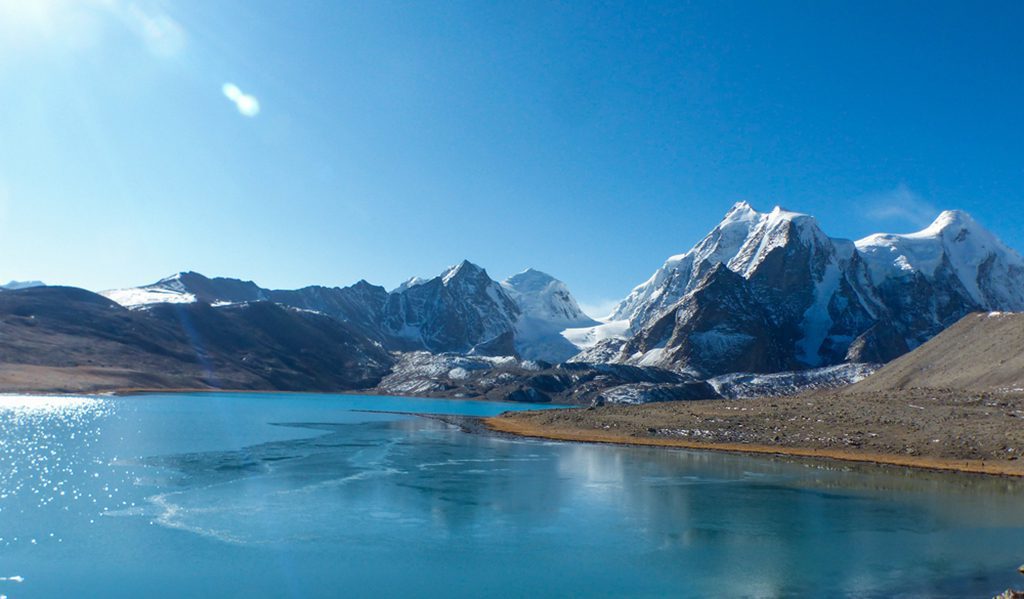
Behold the breathtaking beauty of Gurudongmar Lake, nestled in the scenic landscapes of North Sikkim, India. Image source: Mr.SMS/Shutterstock.com
Himachal Pradesh, Uttarakhand, and the contentious state of Jammu and Kashmir make up the Indian region known as the Himalayan North. Besides the politics and current history of this area, there is nothing to stop this from becoming one of the most beautiful locations in the world: a country of green hills, luscious forests, and jagged, sky-piercing mountains.
Visit Valley of Flowers National Park in Uttarakhand for scenery reminiscent of the Swiss Alps, but on a far grander scale. The first week in August sees this green valley tinted pink with enormous Himalayan balsam, making for a magnificent spectacle. Manali’s Alpine Forests and Dharamshala, the Dalai Lama’s home, both feature in Himachal Pradesh’s epic scenery.
16-Punjab & Haryana

Experience the splendor of the Golden Temple, also known as Harmandir Sahib, in Amritsar, Punjab, India. Image source: saiko3p/Shutterstock.com
Both Punjab and Haryana are located in southern India, below the Himalayas. Punjab, whose name comes from the Persian for “five rivers,” is much different from the business-focused neighboring state of Haryana, which almost encircles Delhi, the country’s capital. This western state of India comprises a significant historical and cultural area, and its vast landscape is dotted with deserted forts.
The Sikh religion is widely practiced in Punjab, which is why the region is home to many sacred temples (gurdwara). The city of Amritsar and its most recognizable feature, the Golden Temple, can be found in this state. The Sikh faith’s holiest site, the Harmandir Sahib Temple, was constructed in 1577.
15-Rajasthan
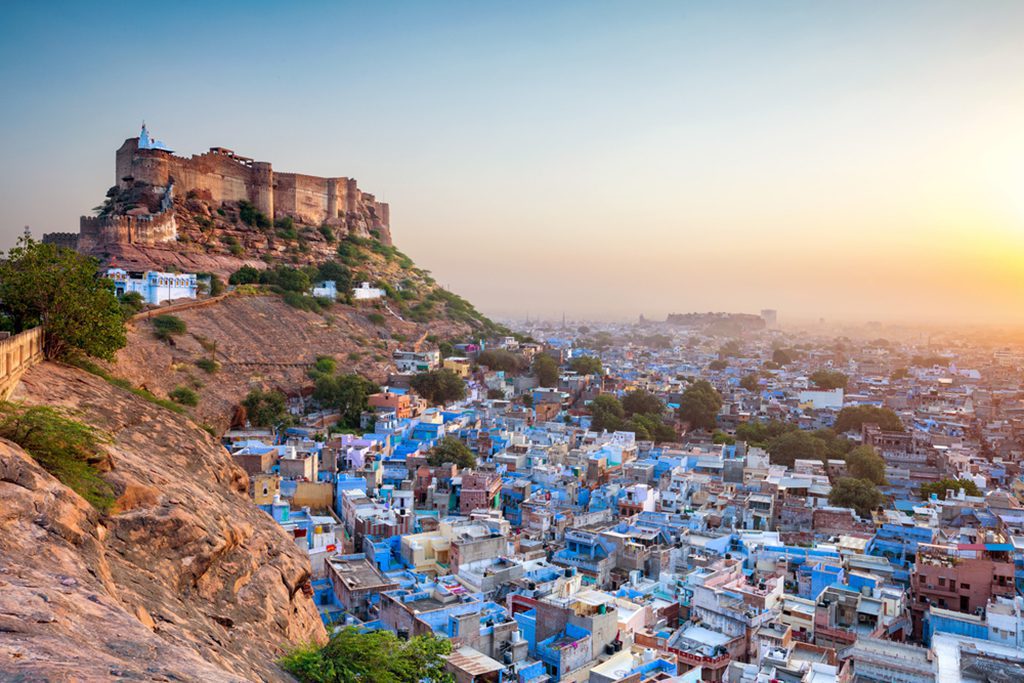
Discover the enchanting Blue City and the majestic Mehrangarh Fort in Jodhpur, Rajasthan, India. Image source: Sean Hsu/Shutterstock.com
The Thar Desert, located close to Jaisalmer, is where visitors can ride camels and see ancient stone structures that reveal the region’s Mughal past. Mount Abu, located near the southern extremity of the Aravalli Range in Rajasthan, is one of the coolest regions in the state and is surrounded by woods, waterfalls, and lakes.
In the west of the country, in the enormous state of Rajasthan, you’ll find one of India’s driest regions. Jaisalmer, often called the “Pink City,” and Jodhpur, also called “The Blue City,” are two examples of the magnificent fort cities that dot this area.
The famous Ranthambore National Park, home to a sizable population of Bengal tigers, is also located in Rajasthan.
14-Gujarat

Capture the view of Gomti Ghat and the revered Hindu temple “Shree Dwarkadhish” in Dwarka, Gujarat, India. Image source: O’SHI/Shutterstock.com
The westernmost state of India, Gujarat, is located to the south of Rajasthan and is home to some of the country’s greatest cultural diversity. The Rann of Kutch, commonly known as the “White Desert” because of its extensive salt flats, is a feature of the Thar Desert in the Indian state of Gujarat.
At low tide, the water rolls back for kilometers, revealing rocks, sea slugs, and a diversity of wildlife in the Marine National Park in the Gulf of Kutch. Blackbuck National Park in Velavadar has dry grasslands.
Gujarat is home to a section of the massive Western Ghats mountain range. In addition, some of the oldest Jain temples and sacred places in the country can be found on the state’s highest peak, Mount Girnar.
13-Maharashtra
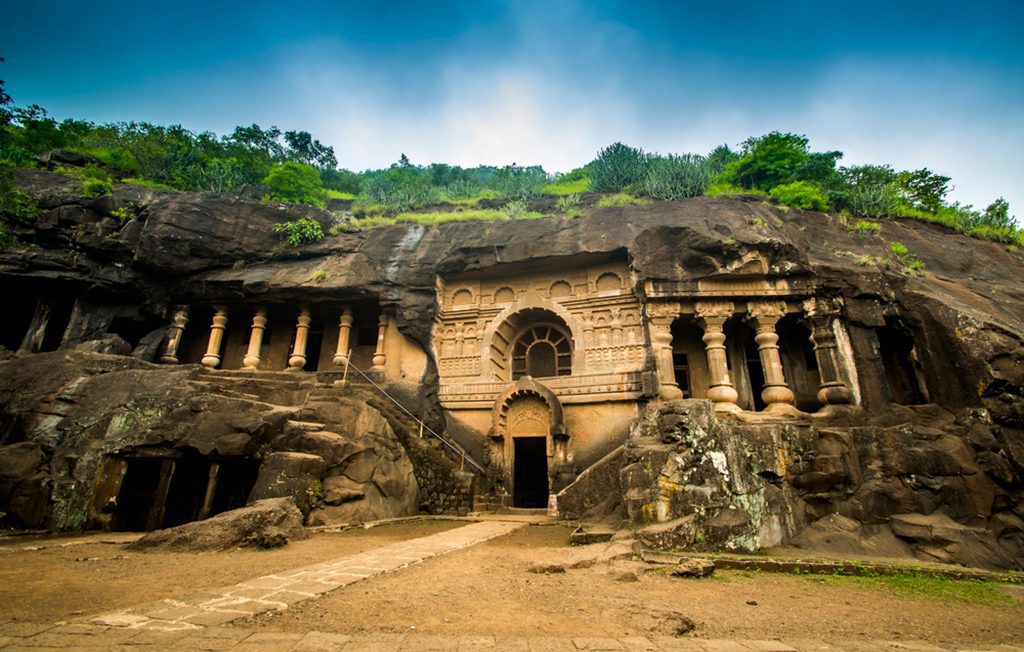
Explore the sacred Pandav Leni, also known as the Buddha Caves, in Nashik, Maharashtra, India. Image source: CRS PHOTO/Shutterstock.com
One of India’s biggest and most well-known cities, Mumbai, is located in the state of Maharashtra, which occupies the majority of west-central India and is mostly based on the Deccan plateau. This is India’s wealthiest city, having the highest concentration of the country’s millionaires and billionaires, as well as its biggest concentration of slums.
The 700-kilometer-long Konkan Coast, located in the country’s west, is dotted with kilometers of untouched, unvisited beaches like the relatively secluded Kashid Beach.
Amboli Nature Reserve is a hill station deep inside the country, where visitors can enjoy a scenic environment complete with waterfalls and beautiful sunsets while gazing at the clouds above. The Ellora and Ajunta Caves in the Aurangabad area are among the greatest temple-cave complexes in the world, housing a spectacular array of ancient Hindu, Jain, and Buddhist structures.
12-Goa
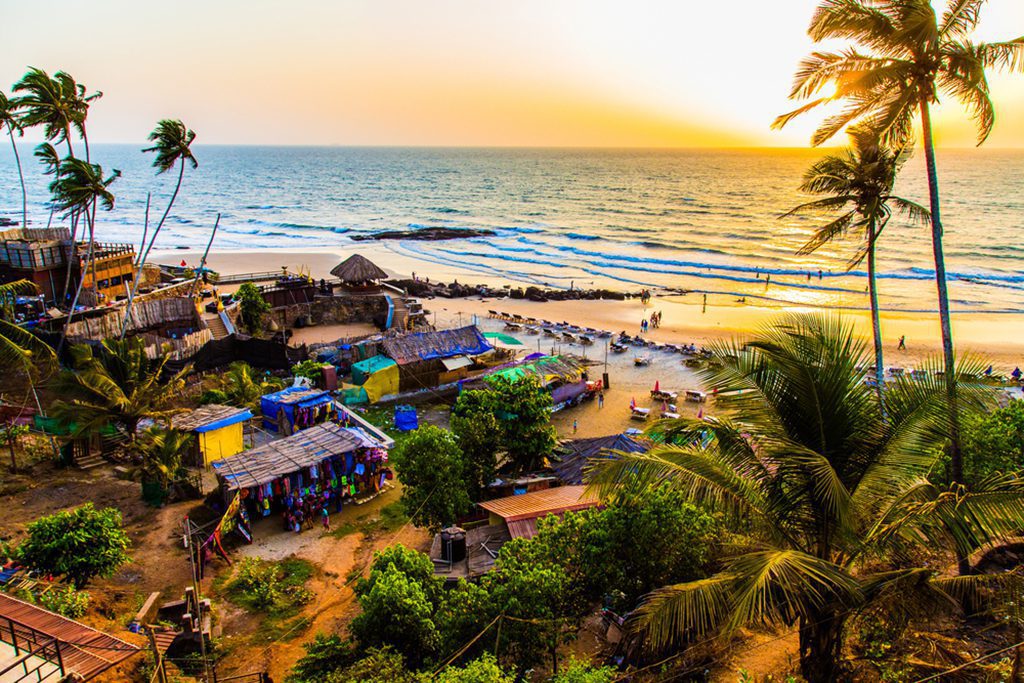
Witness the mesmerizing sunset over the palm-fringed beach on the Pacific Ocean in Goa, India. Image source: Rossana Gatti/Shutterstock.com
Goa, a former Portuguese colony, has a coastline famous for its palm-tree-lined beaches. Galgibaga, a beach in South Goa that is both pristine and relatively undiscovered, is a popular turtle nesting site. Nonetheless, there are more well-known beaches, such as Palolem with its beachside restaurants, the chill vibes of Mandrem, and the hippy flavor of Anjuna.
The Portuguese governor-general signed a surrender when the Indian army seized Goa in 1961, returning this interesting piece of India to the nation. Even today, remnants of the Portuguese presence can be seen in the form of decaying strongholds, active churches (25% of Goans are Christians), and even in the cuisine.
11-Delhi
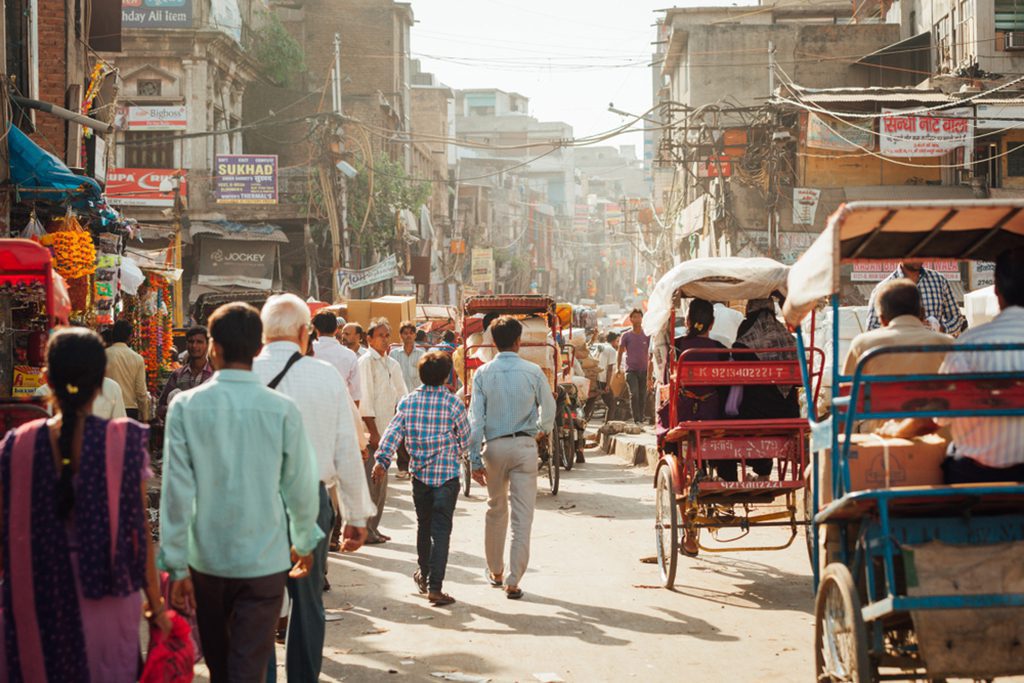
Immerse yourself in the vibrant atmosphere of Chandni Chowk, the bustling street in Old Delhi, India. Image source: Elena Ermakova/Shutterstock.com
Districts from the states of Haryana, Uttar Pradesh, and Rajasthan surround Delhi, the capital of India, to form the National Capital Region. There have been constant residents in this bustling metropolis for almost 2,500 years, making it India’s second-most populated city. The colonial commercial center of Connaught Place dates back to the 18th century, and the 20th-century Lotus Temple (the Baha’i Faith’s headquarters) is only one of many fascinating landmarks.
There is still a lot of natural beauty in this area, despite the growing number of cities. Okhla Bird Sanctuary is a great destination to see exotic birds in their natural environment, and it even has its own metro station on the Delhi metro’s magenta line!
10-Uttar Pradesh
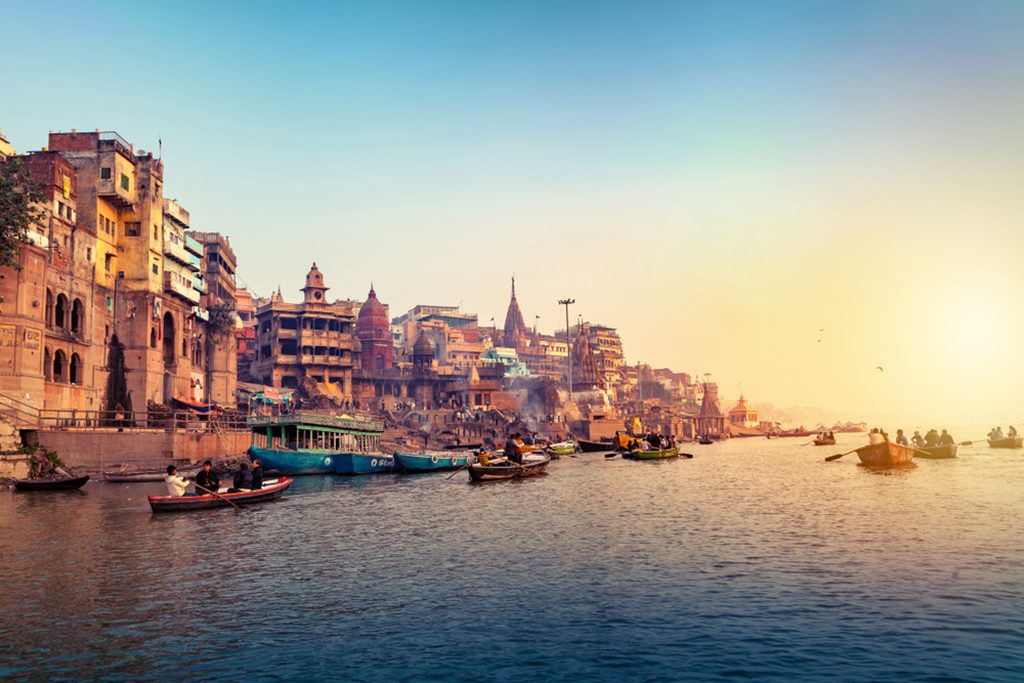
Discover the ancient city of Varanasi, also known as Banaras, in Uttar Pradesh, India. Image source: ImagesofIndia/Shutterstock.com
Uttar Pradesh is India’s most populous state, located east of Rajasthan and bordering Nepal to the north. Krishna’s birthplace has long been thought to be in this state, making it culturally significant for Hindus. However, the state also holds significance for Buddhists, since it was here that Guatama Buddha delivered his last speech.
The confluence of the Yamuna and the Sarswati rivers strengthens the already formidable Ganges. One of the most stereotypically “Indian” cities, Varanasi, is located on the Ganges. People go to this part of the river because it is considered sacred and is used for rituals such as baptism, washing, and cremation.
The state capital, Lucknow, is filled to the brim with historical landmarks from its time as a Mughal stronghold, Nawab capital, and vital metropolis in British India, and Agra, home to the world-famous Taj Mahal, is located here as well.
9-Bihar
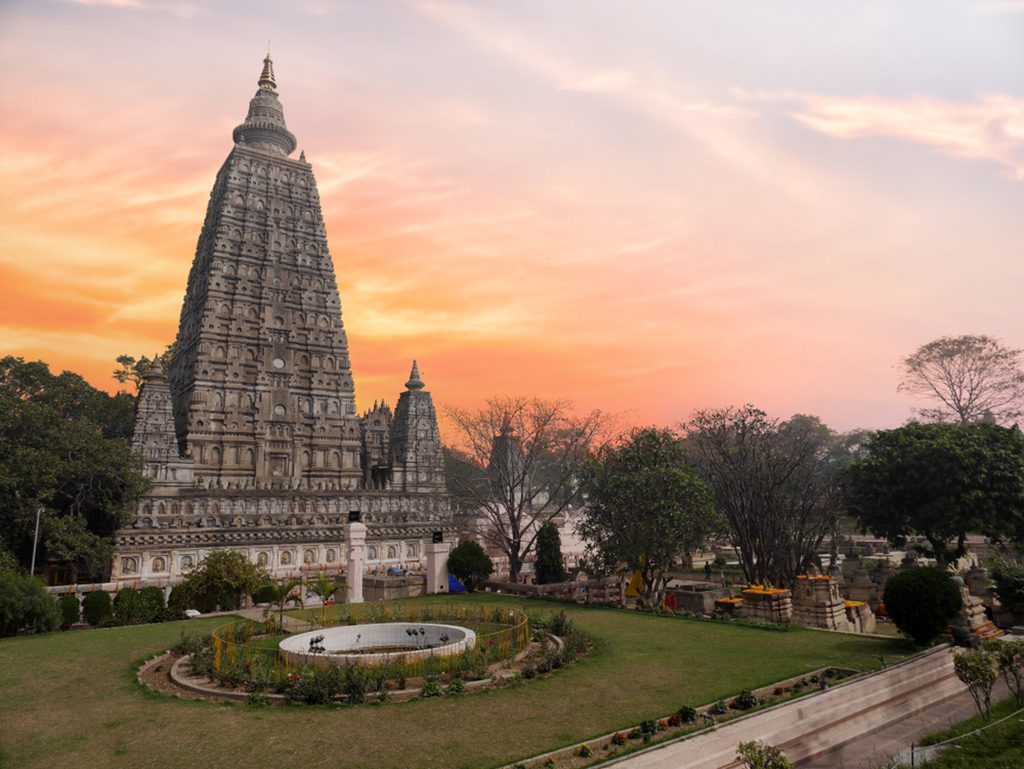
Admire the serene side view of the stupa at the sacred Mahabodhi Temple Complex in Bodh Gaya, India. Image source: Mongkolchon Akesin/Shutterstock.com
Eastern Uttar Pradesh is home to the state of Bihar, which is primarily characterized by a subtropical climate and expansive, fertile plains. Valmiki National Park, a popular tourist destination, is the only national park in the region. This area is home to lakes and forests where endangered species such as Bengal tigers, Indian elephants, and Indian rhinos roam.
Likewise, Asia’s biggest oxbow lake, Kanwar Lake, is home to a variety of rare and unusual birds, including the endangered Siberian crane, which can be seen in the nearby Kanwar Lake Bird Sanctuary. Bodh Gaya, the sacred location where Gautama Buddha is said to have obtained enlightenment beneath a Bodhi tree, is only one example of a region rich in natural beauty.
8-Madhya Pradesh

Explore the majestic Gwalior Fort in Madhya Pradesh, India, showcasing exquisite Mughal architecture. Image source: ImagesofIndia/Shutterstock.com
The ruins of the Maruyan Empire, the Rashtrakuta dynasty, and other periods of Indian history are all still visible in this central Indian state, earning it the nickname “The Heart of India.” It also has a bounty of natural treasures, many of which are underappreciated by visitors.
The Bandhavgarh National Park is a stunning wilderness area characterized by dense vegetation, rolling hills, and wild Bengal tigers. You can easily see monkeys, deer, and other wild creatures in India’s Pench National Park, found in the Plains; this is the forest that served as the basis for Rudyard Kipling’s The Jungle Book. At Bhimbetka, you can even see artwork that dates back 30,000 years!
7-Eastern India

A breathtaking view of the lush green valleys in Cherapunji, Meghalaya. Image source: SurabhiArtss/Shutterstock.com
In Eastern India, you’ll find a wide array of landscapes and cultures. from Darjeeling’s cool, misty climate for producing tea to the scorching, humid coast of Odisha. Kolkata, formerly called Calcutta, is the capital of the Indian state of West Bengal and the seventh-largest city in all of India. It is known for its impressive colonial architecture, arts and culture festivals, and its role as the epicenter of the so-called Bengal Renaissance of the early 20th century.
Sundarbans National Park, where over 400 Bengal tigers roam, is located in the woods and marshes of the enormous Ganges Delta. From Tiger Hill, on Darjeeling’s lower slopes, you can see for miles, and on a clear day, you may even be able to see Mount Everest.
During the colonial era of British rule, Darjeeling served as both a health spa and a military outpost. In the present day, the region is home to some of the top British-style public schools in India and the last remaining steam locomotives in India (through the Darjeeling Himalayan Railway).
6-Northeast India
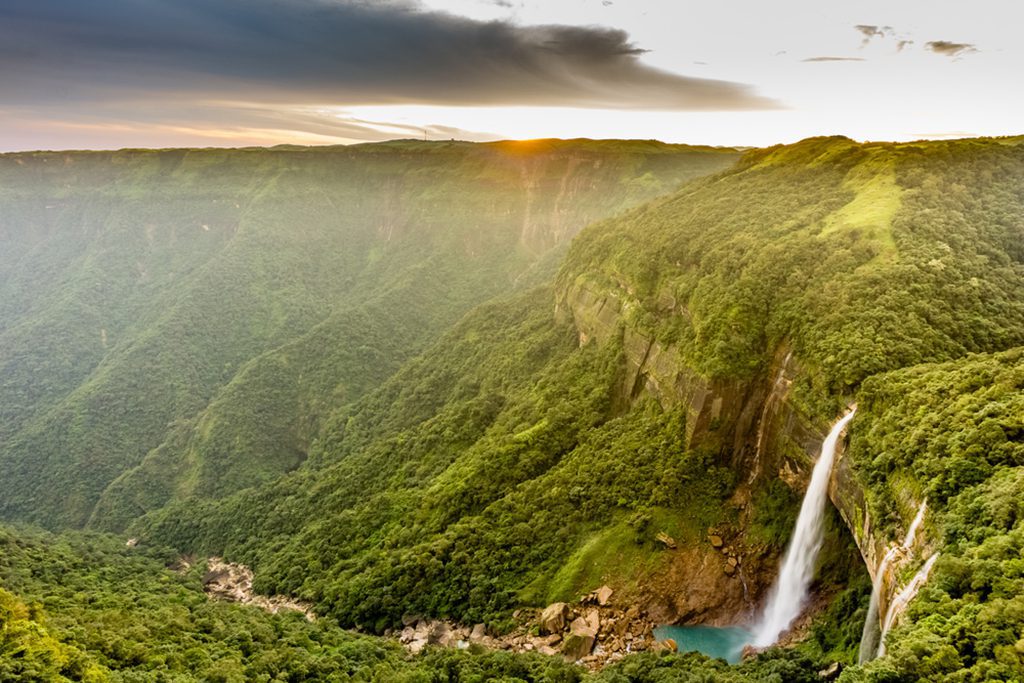
Witness the awe-inspiring beauty of a magnificent waterfall in Meghalaya, Northeast India. Image source: Handerson Chulet/Shutterstock.com
Incredible scenery, from towering mountains to deep river gorges, can be found in remote northeast India. This area is completely separated from the rest of the country since it is landlocked and surrounded by four countries (China, Myanmar, Bhutan, and Bangladesh).
Snowy mountains characterize the state of Arunachal Pradesh, while the semi-autonomous territory of Nagaland is home to stunning flower valleys like the world-famous Dzukou Valley, where the lilies only bloom seasonally. Meghalaya’s other renowned waterfall, the Nohkalikai Waterfall, is India’s highest single-drop waterfall, while Mizoram’s Vantawng Falls are among the country’s most well-known. While Assam is home to Majuli Island, the biggest river island in the world, Yumthang Pasture in Sikkim is a beautiful, grassy oasis. Those who visit northeast India will be impressed by everything it has to offer.
5-Karnataka
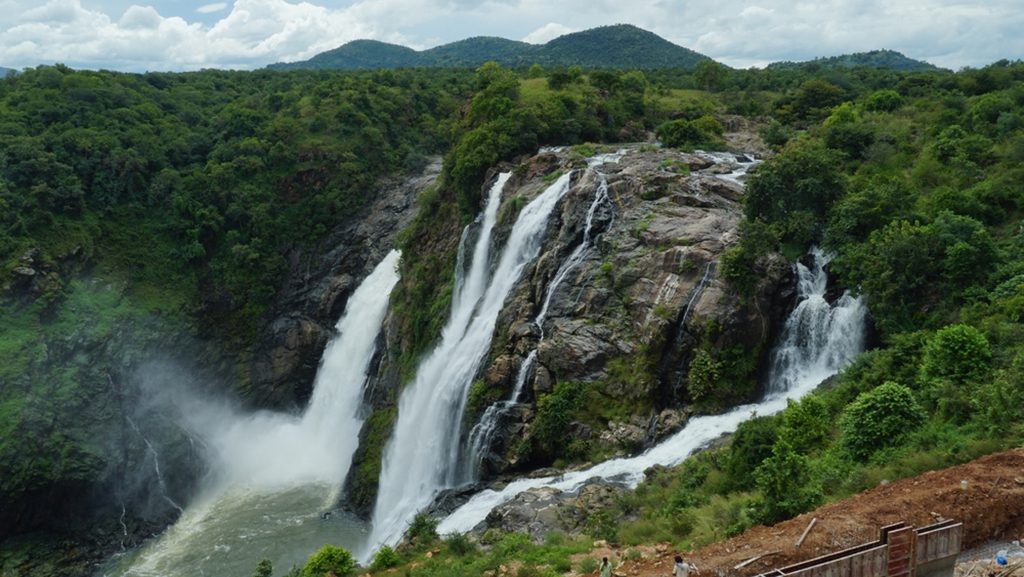
The famous Gaganachukki Falls in Shivanasumdra, Karnataka, showcasing its grandeur. Image source: rakesh kp/Shutterstock.com
Karnataka, located to the south of Maharashtra and Goa and to the north of Kerala, has a storied past as a center of ancient and medieval Indian civilizations. Mysore (sometimes spelled Mysuru) has become famous as the cultural center of the state because of its many ancient landmarks, including the Mysore Palace and the towering St. Philomena’s Cathedral.
The forward-looking city of Bangalore, or Bengaluru, on the other hand, serves as the official capital of Karnataka. This city is a reflection of India, with skyscrapers and IT corporations abounding, as well as Buddhist, Jain, Sikh, Christian, Muslim, and Hindu places of worship.
Karnataka’s jungles are wild outside the cities; not only are they home to tigers, monkeys, and the greatest number of elephants in all of Asia, but they also lie outside of the cities.
4-Andhra Pradesh
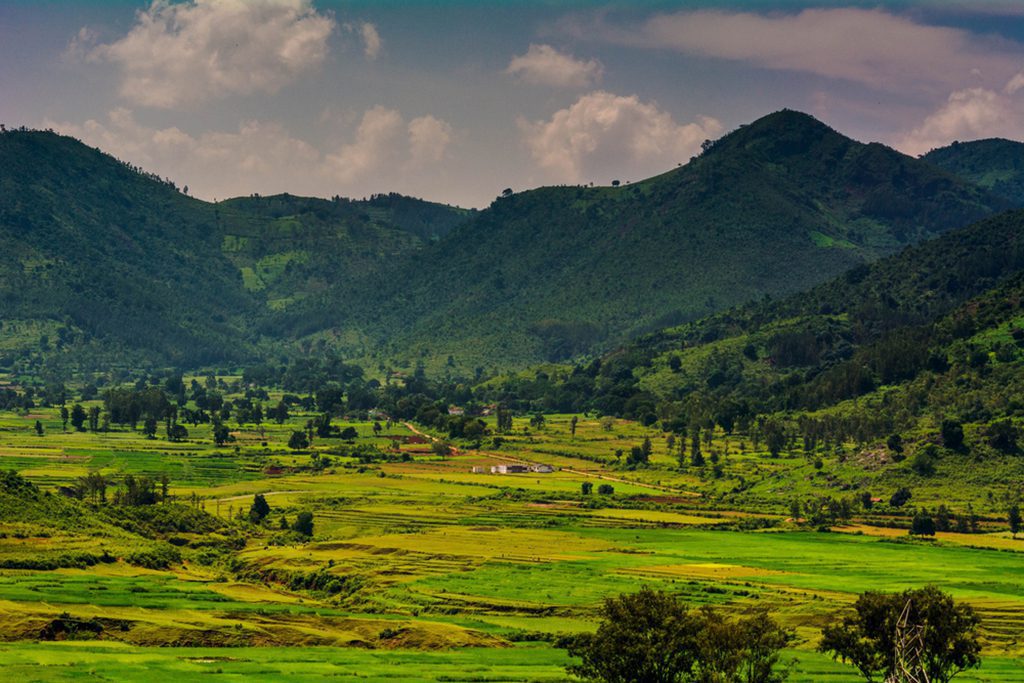
The tranquil beauty of the landscape in Araku Valley, Andhra Pradesh, India. Image source: Hamza Indian/Shutterstock.com
Andhra Pradesh, on the coast, and Telangana, in the interior, used to be one single entity until 2014, when Telangana became India’s newest and 29th state.
The area is rich in natural beauty. The Araku Valley is a highland region of Andhra Pradesh, India, located in the Eastern Ghats. There are streams, waterfalls, coffee plantations, and a variety of indigenous peoples to learn about in this verdant, paradise-like area. Ananthagiri, a refreshing hill station with breathtaking vistas, is not far away.
Near Hyderabad, the capital of Telangana on the Deccan Plateau, are a number of parks, including Jawahar Deer Park, and to the north is Adilabad, a city known for its numerous waterfalls.
3-Kerala
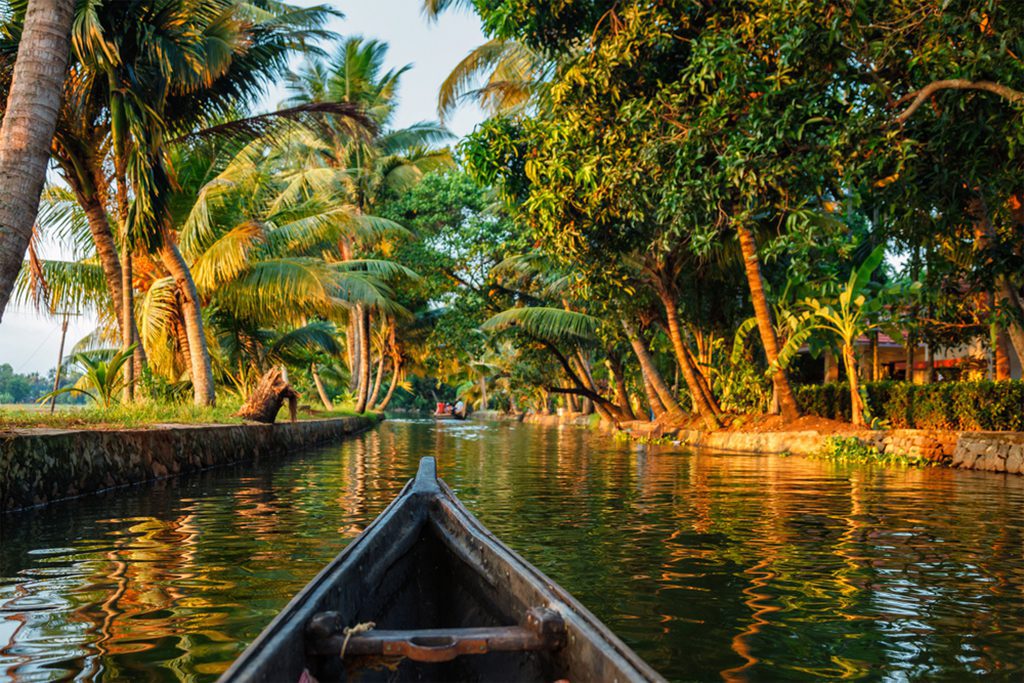
Enjoy the tranquil beauty of Kerala’s backwaters while exploring in a canoe boat. Image source: Dmitry Rukhlenko/Shutterstock.com
Kerala, like much of India, has its own distinct culture as well as its own language and script (Malayalam).
Plus, it’s one of the most tranquil destinations in the country. The backwaters, a network of canals and rivers where visitors can stay on luxurious boats and take leisurely boat trips, can be found near Alleppy, at the base of the Western Ghats.
Located in the Idukki district, Munnar is a hill station known for its many tea plantations. Eravikulam National Park, the first in the state, is located not far from Munnar, and it is here that you can view the critically endangered Nilgiri Tahr.
2-Tamil Nadu

Behold the grandeur of the Sri Ranganathaswamy Temple in Trichy, Tamil Nadu. Image source: Lizavetta/Shutterstock.com
Tamil Nadu, Kerala’s neighbor to the east, is a unique state that traces its ancestry back via the Chola, Chera, and Pandya empires, with additional impacts from the British and French colonial empires, who reigned over portions of this state.
The state capital, Madras (or Chennai, as it is now called), is a vibrant metropolis where you may explore colonial relics and the heart of the Tamil film industry. The colorful Meenakshi Temple and Koodal Azhagar Temple, both built in the 6th century, and the wonderfully ornate Thirumalai Nayak Palace, built in the 17th century, contribute to Madurai’s reputation as the “Athens of the East.”
The cultural legitimacy of Tamil Nadu is ensured by the presence of Chettinad mansions and vintage French bakeries in Pondicherry. The Western Ghats also have incredible jungles and animals.
1-Andaman & Nicobar Islands
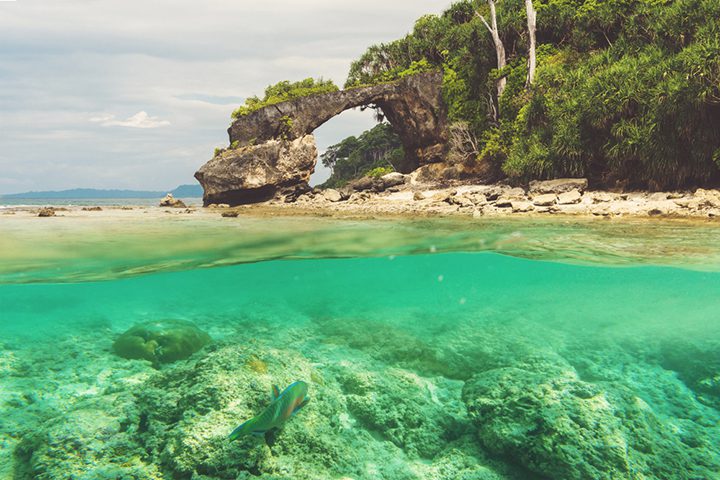
Discover the beauty of the natural bridge at Neil Island, Andaman and Nicobar. Image source: diy13/Shutterstock.com
The Andaman and Nicobar Islands are a group of over 300 islands in the Bay of Bengal, surrounded by coral reefs and home to indigenous peoples. Thailand and Myanmar are closer than the Indian mainland itself.
On one of these islands live the Sentinelese, a mysterious tribe whose technology has somehow remained stuck in the Paleolithic Era.
Only 38 of these islands out of the hundreds are really inhabited year-round. The natural landscape has palm-fringed beaches, extensive mangrove forests, and tropical rainforests with over 2,000 plant species.
Plan your trip with ontravelx and get ready for a journey full of breathtaking sights and priceless memories.
visit:



